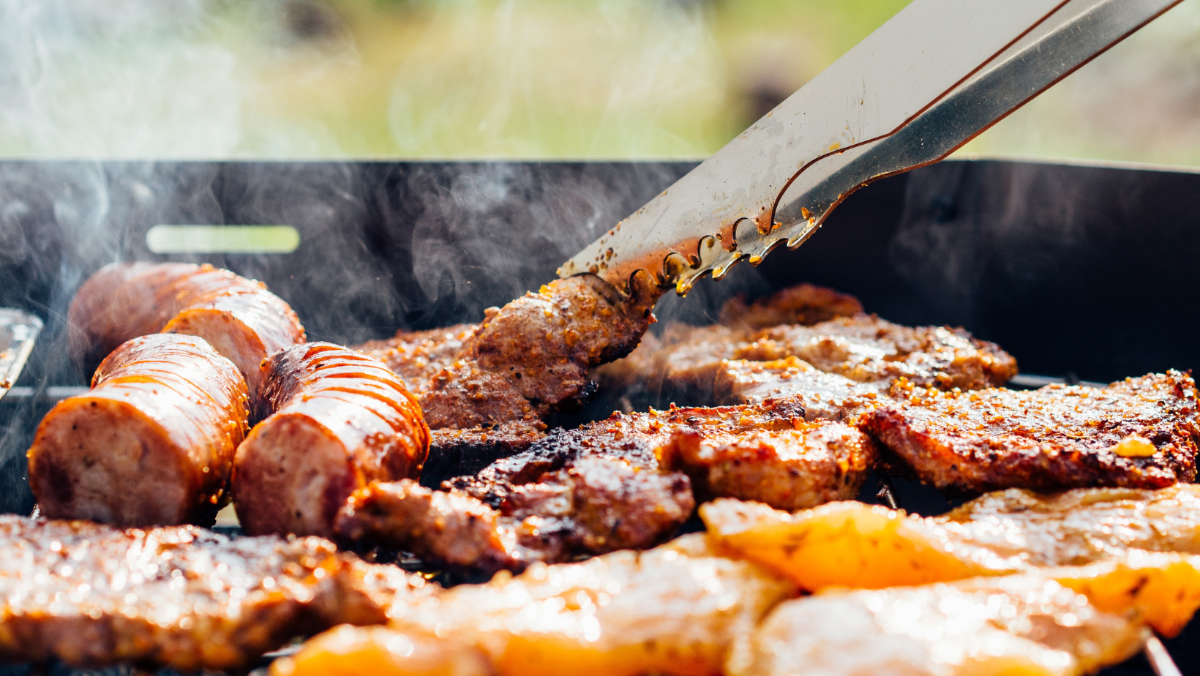
There’s something about spending an evening around the grill that makes us want to relish the moments spent with family and friends on carefree summer nights along the Crystal Coast.
If you are in the market for a home and grilling space is one of your “must haves,” our team at Al Williams Properties can make that happen.
Whether using gas or charcoal, grilling is one of the easiest ways (and most fun) to get dinner on the table. Learn these essential techniques, and you’re well on your way to “grill master” status.
Master Grilling Techniques
Get the food ready.
When it comes to chicken, beef, or pork, remove it from the fridge 30 minutes before cook time (More about seafood and vegetables later). You don’t want to throw a cold piece of meat onto the grill — the outside will char while the inside will be underdone. When you let meat slowly come closer to room temperature, it’ll cook more evenly.
Prepare the grill.
Preheat the grill with the lid closed for at least 15 minutes to make sure it reaches the right temperature – having a preheated grate will create that sear and also help prevent food from sticking.
When the grate is hot, use a grill brush to remove any bits of food that have stuck to the grate.
Choose your heat.
There are two types of heat that you can choose depending on what you’re grilling: direct and radiant. Use direct heat to put a sear on ribs, steaks and chicken, which seals in juices and flavor while creating the perfect interior fork-tender texture. Generally, you’ll want to use direct heat on anything that’s smaller and can cook in less than 15 minutes or so.
Indirect, or radiant, heat is best for larger cuts of meat, or bone-in meat, that require a bit longer cooking time without drying it out. This is also great for anything you want to cook lower and slower,
Hint: If you have food over direct heat and it looks like the outside is cooking too quickly for the interior to be done (or flare ups happen), move it to a cooler part of the grill.
Put a lid on it.
I was always confused about whether you were supposed to grill with the lid on or off, until I went to a cooking class several years ago, and the teacher explained to me that keeping the lid closed is what traps that yummy smokiness that happens when the fat and juices vaporize. The lesson? Keep the lid down as much as possible to get max heat retention and max flavor.
Resist the urge to turn.
Allowing the surface area of your food to stay in one spot for a while is what creates that delicious caramelization, which is what makes grilling, well, grilling. Resist the urge to turn your food more than once, and you’ll be rewarded with a sweet crunchy crust.
Let it rest.
After meat comes off the grill, let it rest on a foil-tented plate for 5 – 10 minutes. This gives time for the juices to redistribute and stay in the meat before you cut into it.
Seafood
Fish: Pat the fish dry, then oil it to prevent sticking. Then add your seasonings. Leave the skin on, even if you don’t plan on eating it, grilling with the skin on is a good insurance policy—the fish will be less likely to adhere to the grates and will help keep the fish together when you flip it.
Scallops & Shrimp: You can grill each piece individually but skewering them will keep smaller pieces from falling through the grates and make it easier to turn them all at once. Use two parallel skewers as opposed to just one to prevent your seafood from spinning and sliding around.
If you don’t want to skewer shrimp or scallops, they are good contenders for a grill basket. Prevent sticking by coating the basket with cooking spray or brushing it with oil before loading it.
Vegetables
Veggies on the grill give a huge flavor boost. Cut the pieces large enough so they won’t fall through the grill grate. Of course, you can layer them on skewers or cook in foil.
Foil folded into a packet with vegetables, herbs or sauces inside can be placed on the grill next to your meat or seafood. Layer your ingredients on the foil. Coat the center of the top layer with cooking spray. Bring the short ends of the foil together, leaving enough room in the packet for steam to gather. Fold the foil over and pinch the top and sides to seal it.
Hint: Vegetables like carrots, sweet potatoes and winter squash will cook better if you blanch them first. For the rest, a little oil and a sprinkle of seasoning are all they need.
The nice thing about living on the Crystal Coast is that grilling weather and spending time outdoors lasts well beyond the summer months. That’s one of the reasons so many choose to live here.
If you are in the market for your perfect home or second home, let the professionals at Al Williams Properties guide you in your search.
